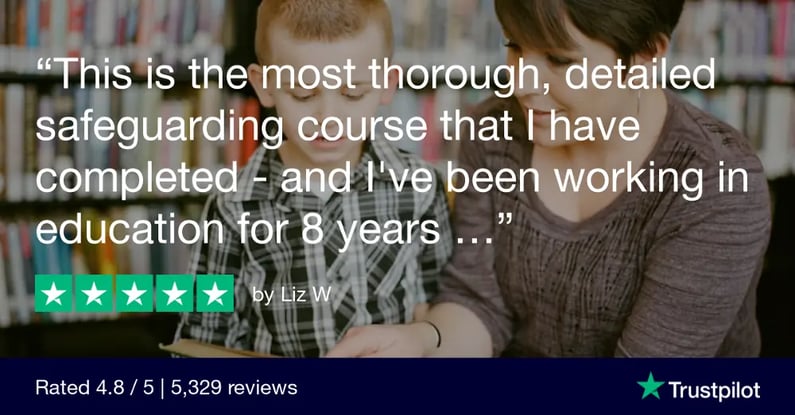Keeping children safe is our responsibility as adults. Childhood can be an uncertain period of life for young people to navigate and failure to protect them from the various dangers that they are vulnerable to as a child can have serious long-term impacts on their life.
Working with children and young people in any capacity comes with responsibility. Whether you are part of an organisation or individually come into contact with children on a regular basis, it’s important to be aware of the safeguarding policies and procedures.
Children of all backgrounds have an equal right to protection from danger.
What is safeguarding children?
Safeguarding is more than just a theoretical approach to ensuring children are well taken care of – it is an action.
Safeguarding children refers to the process of protecting children from abuse and neglect, preventing impairment of their health and development, and ensuring they are growing up in circumstances consistent with the provisions of safe and effective care that enables children to have optimum life chances and enter adulthood successfully.
|
|
Safeguarding Children Awareness Training |
|
Safeguarding policies create a framework that ensures that any voluntary or community organisations, schools and other entities in the public or private sectors that come into contact with children follow the necessary procedures to maintain a safe, healthy environment.
What are the 6 principles of child safeguarding?
The UK government drafted six key principles of safeguarding that can also be implemented in child protection strategies. The 6 key safeguarding principles are: Empowerment, Protection, Prevention, Proportionality, Partnerships, and Accountability.
1. Empowerment
It is important for caregivers to create an environment that empowers children to have autonomy over their own decisions, allowing them to say 'no' or speak up when faced with uncomfortable positions.
Empowerment can be a powerful tool for children to protect themselves. Authority is sometimes used to capitalise on a child's vulnerability, however, by giving children the confidence to speak up, you should get more clarity on how they're feeling and so allowing you to help them, whilst allaying their fears if they face problems in the future.

2. Protection
Children, especially those who are victims of abuse, need to be provided with the support they need to prevent further harm. These need to be key measures such as access to healthcare, provision of social workers and other key child protection services.
 Providing the appropriate support system is one measure to protecting children from abuse.
Providing the appropriate support system is one measure to protecting children from abuse.
3. Prevention
Caregivers need to ensure that they prevent abuse or harm of any kind from happening to children in their care. This can be done through training staff, raising awareness of abuse and making sure that there is enough information and it is easily accessible.
Every child is individual, and so each safeguarding case is unique. As such any prevention measures should consider the individual circumstances of each child in your care.
 Prevention measures can safeguard children from abuse in the real world and online.
Prevention measures can safeguard children from abuse in the real world and online.
4. Proportionality
Similar to risk assessment, proportionality ensures that all individuals in the organisation are taken into account when dealing with issues of abuse and safeguarding.
Some individuals may face different levels of risk and this needs to be understood and mitigated as much as possible in order to create a safe space and prevent further abuse.

5. Partnerships
Safeguarding and ensuring successful child protection requires more hands on deck. By forming partnerships with key stakeholders, local communities and relevant entities (NGOs, social workers, health care etc.), abuse, and those guilty of it can be more easily identified, aiding towards the prevention of further abuse.
Partnerships allow for everyone to work together in creating a safe environment within and beyond the organisation.
 Partnerships between key stakeholders help create safe environments for children.
Partnerships between key stakeholders help create safe environments for children.
6. Accountability
Partnerships also reinforce that we are all accountable for the safety of the children around us. Everyone has a role to play towards ensuring the safeguarding and protection of the most vulnerable members of our communities.
Accountability is about taking responsibility for our actions and ensuring that we remain aware of abusive actions, not only to identify them but also to not inflict the same violent behaviour on those around us.
 Safeguarding children is about working together to create a safe space for them.
Safeguarding children is about working together to create a safe space for them.
What is the difference between safeguarding and child protection?
Safeguarding and child protection both put the safety of children and young people first, though their application differs.
Safeguarding focuses on preventing harm being caused to children, whereas child protection is the response when a child is already being harmed.
Child protection is at the centre of safeguarding measures. It addresses individual children who have been identified as endangered or likely to suffer harm. Not only does child protection outline preventative measures, but it also deals with how to respond to concerns about a child who has a history of abuse.
Playing your part
Safeguarding children training is a legal requirement for anyone who works with or around children and young adults (under the age of 18).
If your organisation is involved in child care, understanding and implementing policies around safeguarding children is crucial to establishing a safe environment for the children in your care.
Discover safeguarding training for school staff and more about what your organisation can do to protect all those in your care with our Safeguarding Children and Child Protection awareness courses.

-1.webp?width=243&height=74&name=Logo%20R%20Homepage%20White%20Final%20Horizontal%20Large%20NEW%20small%20(2)-1.webp)




-1.webp?width=50&height=59&name=Cyber%20Essentials%20Badge%20Large%20NEW%20(72dpi)-1.webp)
COMMENTS